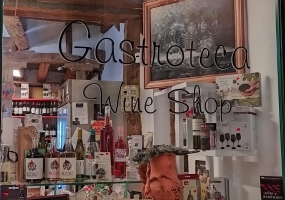RUTAS TEMÁTICAS
From bridge to bridge
SOBRE LA From bridge to bridge
With this route we want to highlight the rich and diverse historical, architectural and industrial heritage that we have in our region, through this selection of bridges and footbridges over the Duero River:
- Puente de Piedra (San Esteban de Gormaz)
- Puente de Piedra (Langa de Duero)
- Puente de Piedra (La Vid) - Puente Viejo (Vadocondes)
- Puente Mayor (Aranda de Duero)
- Puente Mayor (Roa de Duero)
- Sifón Acueducto del Canal de Riaza (Bocos de Duero)
- Viejo Puente (Peñafiel)
- Pasarela del GR-14 (Pesquera de Duero)
- Puente de Olivares de Duero y Quintanilla de Onésimo
CONOCE TODO SOBRE LA RUTA
Of the twenty-four bridges and footbridges in the territory of the Ribera del Duero Wine Route, we have selected ten of them for their antiquity and historical character or for their avant-garde and differentiating character.
Following the course of our majestic River Duero, we make our first stop at the Stone Bridge of San Esteban de Gormaz. It is an important medieval stone bridge with 16 spans, based on another of Roman origin. It is located in a bifurcated area giving way to two courses of the Duero River separated by a central islet, making it a very long bridge, 200 metres long and 8 metres wide. The oldest references date back to 1519.
We continue on to the Stone Bridge of Langa de Duero. It is said that the Count of Miranda, lord of a large part of the land and of the manor tower, ordered the construction of this beautiful bridge to facilitate the transport of goods and the passage of livestock, as it was one of the accesses through which the Cañada Occidental Soriana passed.
And from the province of Soria to the province of Burgos!
The imposing Renaissance bridge over the Duero in La Vid is the eastern gateway to the municipality, at the foot of the Monastery of Santa María La Vid, and just a few kilometres away is the Puente Viejo de Vadocondes (Old Bridge of Vadocondes). The location of Vadocondes in a meander of the Duero River led to the existence of passes to cross its course. The stone bridge of Vadocondes is made up of four semicircular arches and its first documentary references date from the time of the Catholic Monarchs.
Our next stop is the Puente Mayor de Aranda de Duero. This bridge already existed at the beginning of the 14th century, and it was the troops of Fernando IV who tried to demolish it. Its famous railing, also a symbol of the town of Aranda, is made of cast iron with a star-shaped design that gives it its own personality.
Located at the foot of the fortified hill of Roa de Duero, the Puente Mayor de Roa de Duero, a symbol of this town in Burgos, has three wide semicircular arches that have welcomed visitors to the town for many years, until the construction of the new bridge.
We now enter the province of Valladolid, following the course of the Duero River.
As it passes through Bocos, the Riaza Canal crosses our Duero thanks to the Siphon-Aqueduct of the Riaza-Bocos Canal, a concrete structure in the pedestrian walkway part, under a metal arch painted in a striking yellow colour formed by two tubes of one metre in diameter each, braced together, through whose interior the water of the Riaza Canal crosses the 70 metres of the span formed by the river at this point.
The so-called “Old Duero Bridge” of Peñafiel has clear medieval elements, but the width of its arches and the magnitude of the work may date back to a Roman antecedent.
The GR-14 footbridge, located in the municipality of Pesquera de Duero, is one of the largest wooden bridges made in Spain, with a total length of 106 metres and a width of 3 metres. The railings bent in the shape of a barrel are a nod to one of the main activities that irrigate the Duero: wine production.
And we end this route with the Renaissance bridge that links Quintanilla de Onésimo and Olivares de Duero, which dates from the end of the 15th century. As a curiosity, in 1812, in the middle of the War of Independence, the English general Wellington blew out an eye of the bridge, in his strategy against the French, who were stationed in Quintanilla. In the 18th century, this beautiful bridge had 7 arches. The current arches are semicircular, the central one being the largest.
DESCUBRE
EMPRESAS EN LA RUTA

Arnáiz Vineyard
Haza

Wine Bar Cheeses, Hams and Wines
Peñafiel

Protos Winery
Peñafiel

Curioso Restaurant
Peñafiel

Zifar Winery
Peñafiel

Handicrafts – Wine Bar Zagúan
Peñafiel

Palacio de Villachica Winery
Peñafiel

Hostal Rural El Alquerque
San Esteban de Gormaz

Rural House El Torreón I and II
Caleruega

Peñafalcón Winery
Peñafiel

